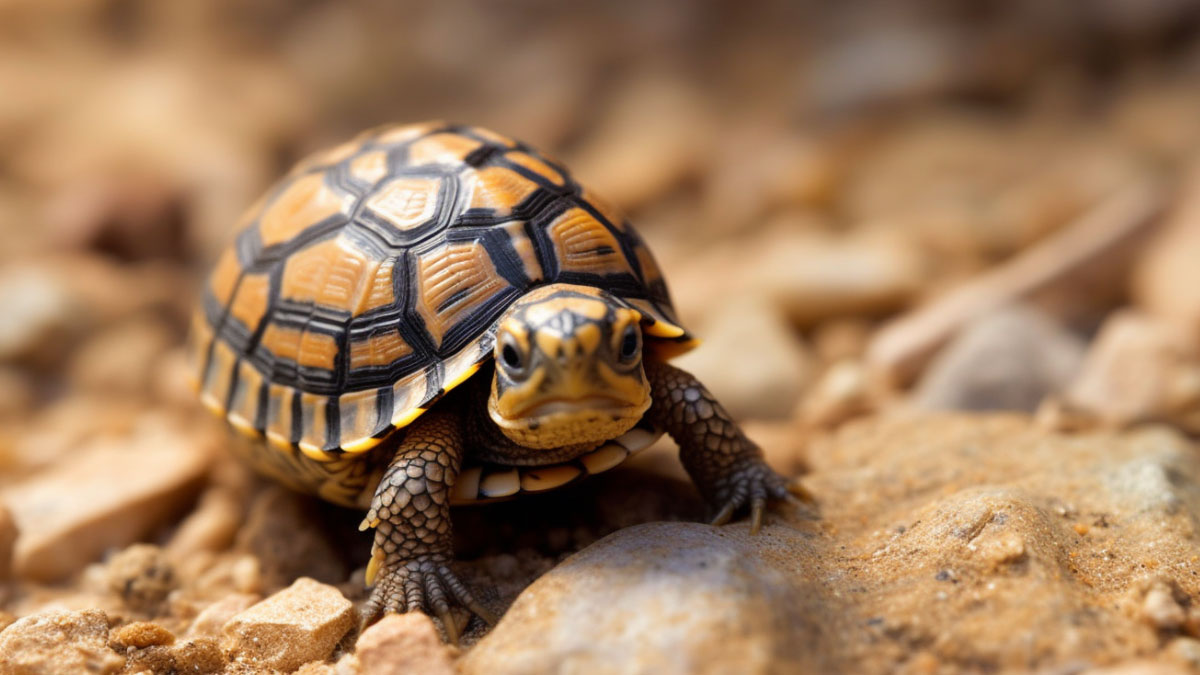Is Baby Leopard Tortoise Care Easy? An In-depth Investigation
Leopard tortoises (Stigmochelys pardalis) are fascinating creatures with unique markings and decades-long lifespans. Though most animal lovers admire this species, many hesitate to pet one because of a misconception about its care. They think taking care of leopard tortoises is critical. And this thought process is specially applied to baby tortoises.
But in reality, is the baby leopard tortoise care that hard? No. Rather, it is definitely easy but requires in-depth knowledge regarding the habitat requirements, feeding, and hydration, health, and maintenance, interaction process, environment requirement, soaking requirement, etc.
Here, we detail all these factors associated with its taking care approach. Let’s start.
Meeting the Habitat Requirements
Contents
Creating an ideal habitat is the most crucial task in the baby leopard tortoise caring process. We detail this context here.
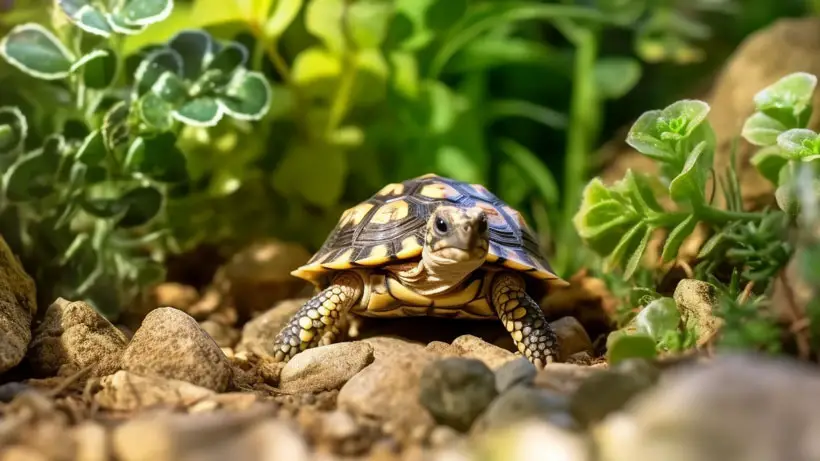
Enclosure
We see many tortoise lovers go for an enclosure with an opening on the top side, but we oppose that. We suggest you build or buy an enclosure that has a side opening.
The rectangular enclosure should consist of one side opening made of transparent glass and wooden framing at the other five sides. Here, the recommended size of the box is 5′ X 4′; still, there more space you can allocate, the better.
Temperature
You must equip the box with an ample amount of electric lighting system. A heat lamp or ceramic heater also can be used to maintain the basking temperature. And a thermometer need to use to monitor the temperature levels.
To cut a long story short, you need to ensure the box-inside temperature maintains steadiness at 70-80°F. Additionally, you have to ensure the humidity level is at 80%.
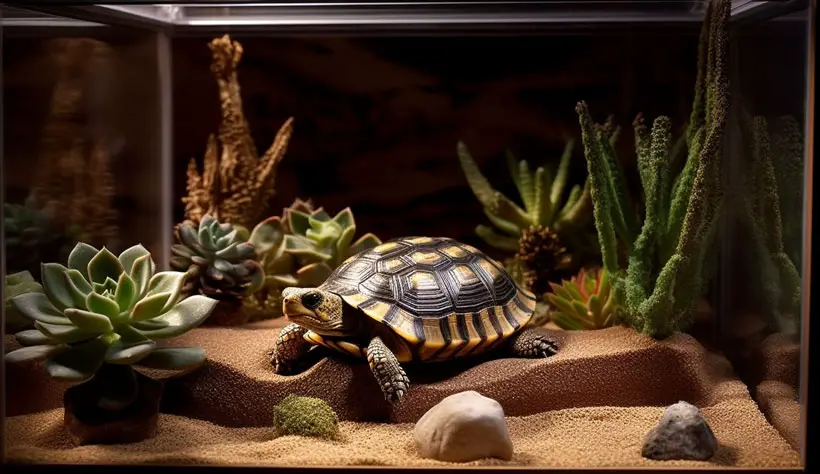
UV-light Requirement
Leopard tortoises require UVB lighting access to metabolize calcium properly and maintain good health. A UVB bulb should be provided and replaced every 6-12 months.
However, if you have the option to facilitate it with a secure space outdoors, it will be the best. You must admit that real sunshine is better than the artificial arrangement in terms of UV light supply.
Substrate
A substrate that is easy to clean and non-toxic is the best for your baby leopard tortoise. In this case, you have several options: reptile carpet, coconut coir, orchid bark, cypress mulch, plain additive-free soil, etc.
Never think of going for sand; using sand causes health issues and can make it die.
Hiding Places
Leopard tortoises need a place to hide and feel secure in their enclosure. It would help if you ornamented the enclosure with several hiding spots. Many options are available in the market, from half logs to caves.
The availability of these items in the housing will facilitate privacy and safety feel when the baby leopard tortoise feels threatened.
Feeding and Hydration
Like every other pet, providing appropriate food and drink to the baby pet is more than essential. And for caring for the hatchling, this context becomes issue-critical.
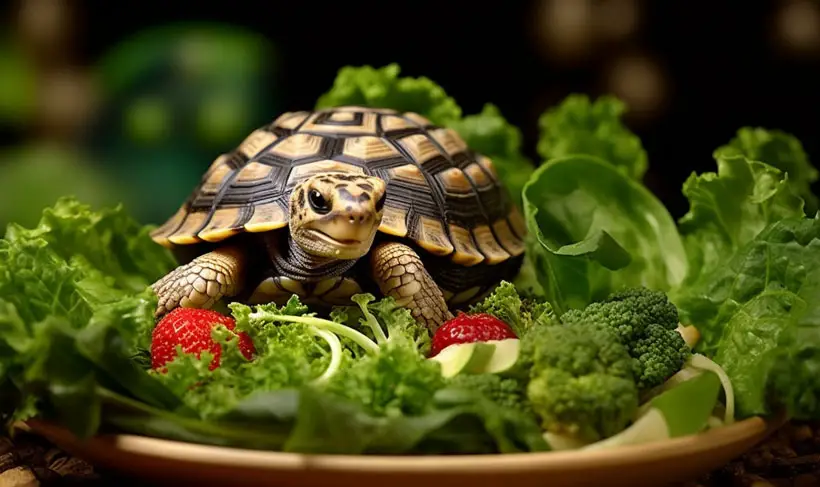
Diet
A well-balanced diet is essential for the health of your baby leopard tortoise. Their diet must consist of various leafy greens, vegetables, and fruits. And you must avoid feeding them high-protein or high-fat foods like dog or cat food.
Feed your tortoise daily, and remove any uneaten food after a few hours to prevent it from spoiling. Below is a chart of suitable foods for your tiny pet.
| Leafy items | Weeds | Special foods |
|---|---|---|
| Mulberry leaves | Dandelion | Testudo Seed Mix |
| Grape vine leaves | Mallow | Pasture mixes |
| Hibiscus leaves | Filaree | Homegrown alfalfa |
| African hibiscus leaves | Smooth Sow thistle | Mazuri Tortoise Chow |
| Blue hibiscus leaves | Prickly Sow thistle | ZooMed Grassland Tortoise Food |
| Hostas, and many more | Milk thistle, and many more | And others |
Daily Diet Chart
Maintain the following portioning of nutrients in the baby leopard tortoise daily meal.
| Nutrient criteria | Quantity |
|---|---|
| Calcium | 2-5% |
| Protein | 10-15% |
| Fiber | 15-30% |
| Supplements | 5% |
| Vitamin D, minerals, calories, etc. | Covering rest |
Water Needs
Leopard tortoises need access to clean and fresh water at all times. We suggest you purchase a mud-made or terracotta dish that is shallow and large enough for your tortoise to soak in. Soaking is important for hydration and can also help with digestion.
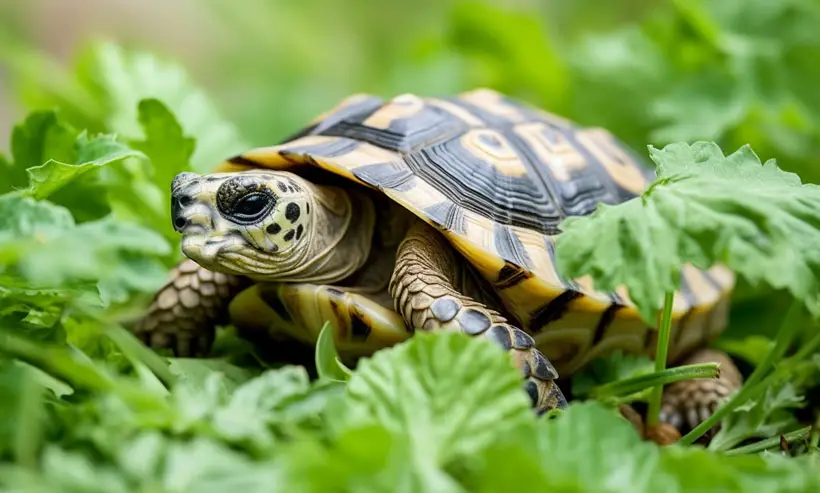
Calcium and Vitamin Supplements
Leopard tortoises require a lot of calcium and vitamins to support their higher growth rate. Also, these supplements help them to maintain strong bones and good health. Below are items you can provide without welcoming any side effects.
- Cuttlebone
- RepCal or ZooMed equipped with vitamin D3
- Mineral supplement line MinerAll
- Reptile vitamin supplement
Health and Maintenance
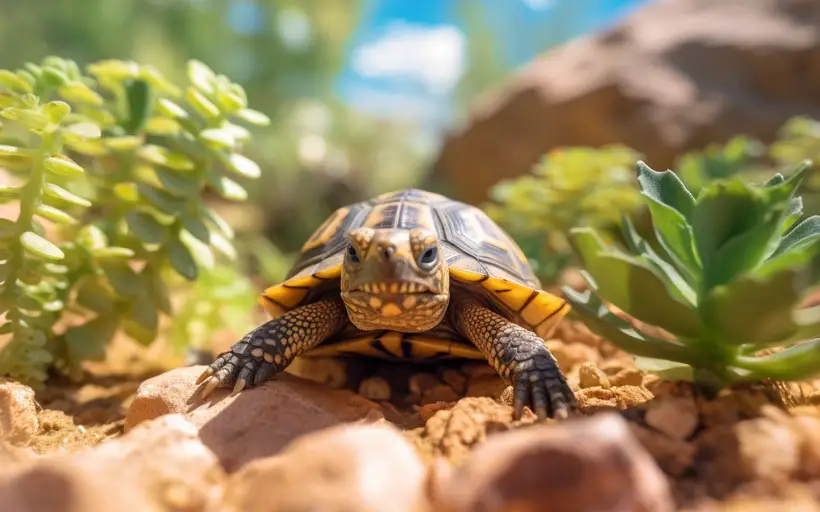
Along with perfect habitat and diet, you also need to care for the baby’s health and maintenance.
Addressing Health Issues
Baby leopard tortoises are generally hardy animals, but they also encounter problems. Some common health issues include respiratory infections, shell rot, and parasites. By observing the symptoms of the diseases, you can address those.
For instance, the issues with shells are usually identified by swelling. The presence of parasites can be identified by the unusual structuring of their poo, and so on. We suggest you take it to a specialized vet once a month until your pet’s size exceeds 4 inches.
Soaking
Leopard tortoises, including baby tortoises, must soak in water regularly to help them stay hydrated and facilitate digestion. Providing a shallow dish of clean and fresh water allows the baby pet to soak independently. Still, we suggest you facilitate socking under your supervision: 20-30 minutes per day.
Here, you must maintain the water temperature within 75-85 degrees Fahrenheit. Lastly, depending on weather conditions, you may go for soaking it more or less than the once-in-a-day parameter. However, there is no harm if you soak it more frequently; they love water.
This YouTube video can provide you with visual guidelines:
Cleaning
Keeping your tortoise’s enclosure clean is essential for their health. Clean the enclosure regularly. You must put effort into removing any uneaten food and feces. Also, you can use reptile safe-clearer, but we suggest consulting the vet before using such chemicals.
And remember to supply fresh and clean water twice a day by throwing out the old water.
Interaction and Handling
Leopard tortoises are not social animals and do not require the same level of interaction as a dog or cat. These behavioral characteristics apply to their babies as well. When handling your baby tortoise, be gentle and avoid picking them up by their shell.
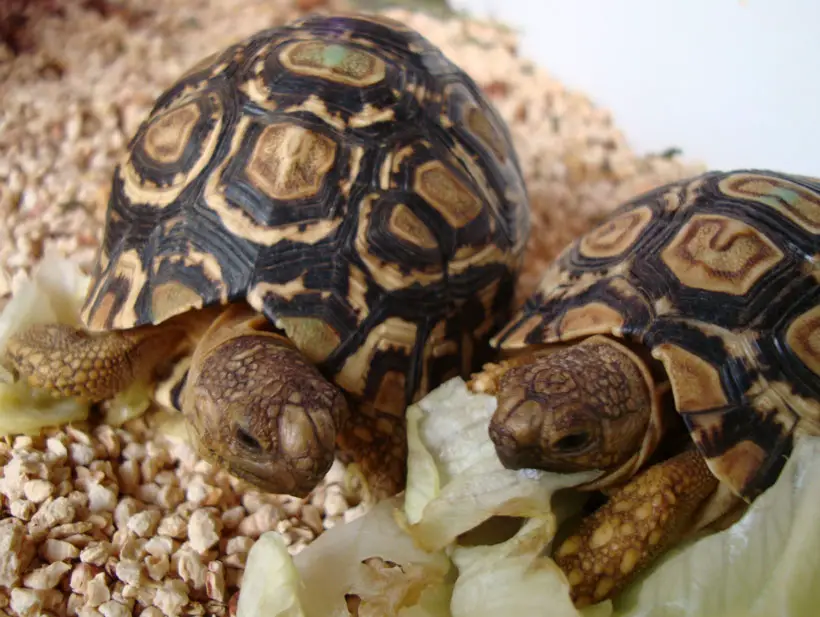
We strongly recommend you start with short handling sessions and gradually increase the duration. Most importantly, you must wash your hand before and after handling the species.
Again, if your baby tortoise lives in an indoor habitat, take it sometimes outside. You should allocate some time to facilitate its roaming around in a natural environment under your supervision.
Exposure to natural sunlight and fresh air stimulates the pet’s appetite and promotes healthy growth.
People Also Ask
Here, we answer some of the most common questions about baby leopard tortoise care.
In general, leopard tortoises do not encounter frequent health issues. Taking it to the vet once a year is enough. However, for babies, you can take it once every six months.
It is not wise to keep the tortoise with other reptiles as they can transmit viruses or bacteria to each other. Still, you can keep your baby leopard tortoise with another tortoise.
The enclosure of the baby tortoise should be cleaned once a week. If you are having a time shortage, clean it at least one time within 14 days.
Final Words
We expect that our detailing on baby leopard tortoise care makes you realize that caring is very easy. You must ensure proper dietary, an enclosure with 70-80 degrees Fahrenheit fan heat temperature and 80% humidity, an appropriate soaking facility, etc.
Also, providing the right environment with proper substrate and diet with supplements positively influences their health and growth.
Finally, we would like to notify you of one more thing here. Many tortoise owners provide outdoor shelter for their pet tortoises, but we do not suggest this for babies. The outdoor habitat is suitable, but it makes the look-after task challenging.

